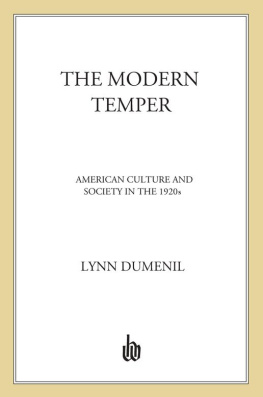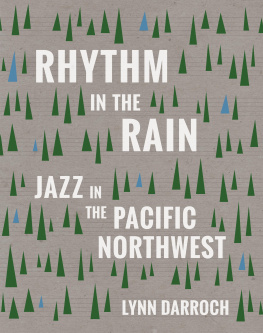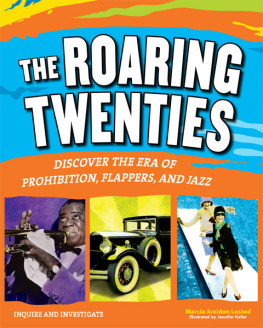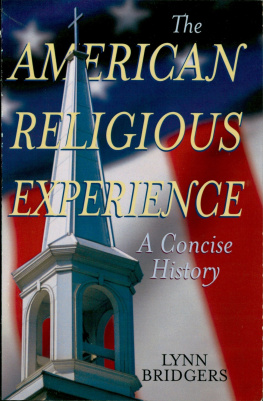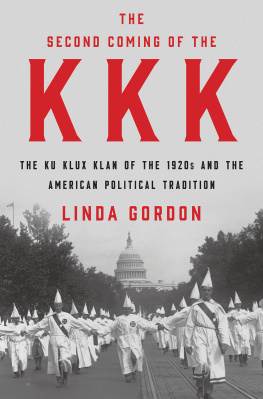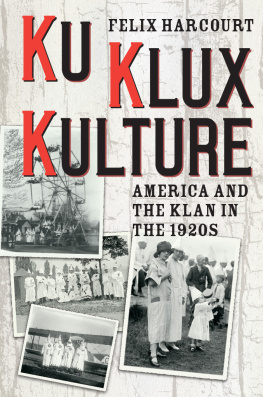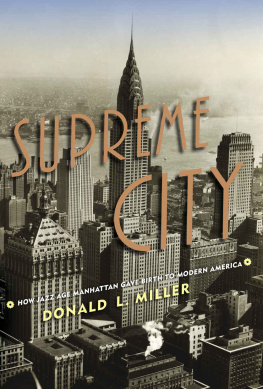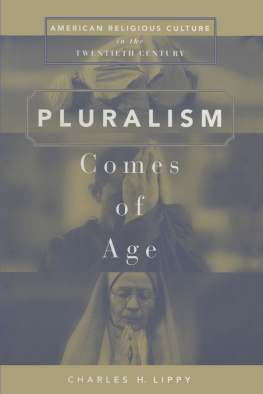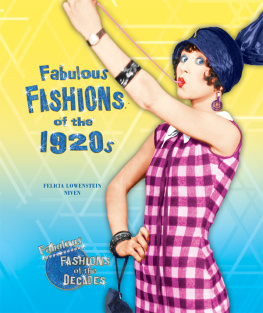In the seven years it took to write The Modern Temper, I have been exceptionally fortunate in the assistance offered by friends, family, colleagues, students, and institutions. Grants from the National Endowment for the Humanities; the Graves Foundation ; Claremont McKenna College; the Huntington Library; and the Louis and Hermione Brown Humanities Support Fund of Occidental College have aided the research and writing. I would like to thank individuals at the last three institutionsRobert Middlekauf, Gaines Post, and David L. Axeenfor their faith in and funding of the project.
I have been teaching undergraduate seminars on the 1920s for over twelve years. The questions students asked, especially those at Occidental College, forced me to clarify my ideas, and their own research often inspired me. Two served as excellent research assistants. Joshua Rose, with a fellowship provided by the Ford Foundation, was especially helpful with the chapter on work and consumption, and Jennifer Prine admirably assisted in fine-tuning at the end of the project.
Deborah Smith and Dian J. Teigler at Occidental are both models of what good librarians should be and Im very appreciative of their efforts to obtain materials in a timely fashion. Librarians at the Huntington Library, the University of NotreDame, Catholic University of America, and Hebrew Union College, Los Angeles, also assisted the research.
I have been very fortunate in the people who have read the manuscript. Arthur Wang offered a contract on the basis of one chapter and has been consistently perceptive in his suggestions for revisions. Eric Foner as consulting editor for Hill and Wang made many valuable criticisms. It has been a pleasure and a privilege to work with them. Daniel Horowitz has been an invaluable supporter, offering encouragement and insights that went far beyond his perceptive reading of the manuscript in various stages over the years. Susan Glenn and I have been brainstorming and reading each others work for many years; her comments on this book were exceptionally shrewd. Paul Boyer read a number of chapters and, as always, managed to combine infectious enthusiasm with acute perceptions. Ellen DuBois has likewise been a source of encouragement and critical insight, especially with her suggestions for the chapter on the New Woman. I benefited from many fruitful conversations with Stuart McConnell and from his thoughtful comments on the introduction. Debbie Martinson quickly and astutely read two chapters and James Halstead came to the rescue several times with advice about economic history. I am immeasurably indebted to Lawrence W. Levine, both for his meticulous reading of this manuscript and for the long-standing intellectual challenge and warm encouragement he has offered since my days as his graduate student. All of these readers embody the very best of scholarly exchange and friendship. I thank them not only for their many contributions to making this a better book, but also for remaining my friends even when at times I obstinately ignored their undoubtedly sound advice.
Many kind friends and family withstood both the gloom and the excitement generated in bringing the book to fruition. The interest and encouragement of my niece, Janet Lynn Chaney, is exceptionally meaningful to me; she is joined by Elinor Accampo, Michael B. Cohen, Nina R. Gelbart, Elliott Gorn, Gayle Green, Sheila Levine, Julia Liss, Barbara Loomis, Margie Proctor, Rita Roberts, Libby Sayre, Helena Wall, and Robert Winter, in helping to make the process more bearable.
Finally, Norman Cohen has worn two hats. As a historian, he brought his considerable expertise and intelligence to his vigorous criticism of the book in all its stages. As a mate, the depth of his love and encouragementnot to mention his outstanding culinary skillsprovided a nurturing environment that sustained me at every turn. Part of the joy in finishing the book was the anticipation of dedicating it to him, with love.
J ust as the end of World War I helped to frame the beginning of the decade, the stock market crash of October 1929 seemed to herald the demise of the 1920s. The crash not only served as a powerful marker, but also symbolized the failure of a key trend in the 1920s: the get-rich-quick mentality that catapulted many Americans into a speculative frenzy. This spirit emerged first in the Florida land boom during the first half of the decade. After the war, enterprising developers began touting Florida as the American Riviera. They subdivided almost sixty miles of coast south of Palm Beach into fifty-foot lots, built hotels and resorts, and dredged and filled to create new cities like Coral Gables. There, the developer embellished his creation with canals and gondolas to enhance the sense of a Mediterranean paradise of sun and sand. As part of an imaginative advertising campaign, he brought in William Jennings Bryan to offer a sort of sermon on the wonders of the Florida climate while seated on a raft in a lagoon. Songwriter Irving Berlin contributed to the magic with his song When the Moon Shines in Coral Gables. All the boosterism and advertising worked and people flocked to Florida to invest in the miracle.
Miamis population more than doubled and became, as Frederick Lewis Allen described it, one frenzied real-estate exchange.Buyers were apparently so eager that they obstructed traffic, prompting the city to pass an ordinance prohibiting people from selling land or even opening a map while on a city street. There and elsewhere in Florida, investors put down a mere 10 percent and paid fantastic prices with the expectation of selling at a hefty profit within a matter of weeks or months. The scramble to invest reached its peak in 1925, but eventually, as with all bubbles, the boom collapsed and prices began to plummet, leaving investors with huge debts on highly depreciated land. As prices began to slide, a natural disaster compounded the man-made one; a hurricane roared through the area in September 1926, killing 400 people and wreaking widespread havoc. Individuals defaulted and banks failed. Although major investors went on to develop the state at a more gradual pace, the Florida frenzy was over.
Just as this bubble popped, another, even more exciting one was developing. The stock market boom began as early as 1925, but it was in 1928 that the dramatic surge in prices and volume took off. Before that point, prices bore some relationship to the productivity and dividends of the company issuing the stock, but increasingly after 1928, investors were speculating in profits to be made in selling securities. With this, John Kenneth Galbraith argues, the mass escape into make-believe, so much a part of the true speculative orgy, started in earnest.
Although not everyone participated in the craze, it seemed that everyone, encouraged by the awestruck media, followed the progress of the spiraling prices. It was news when General Motors stock rose 75 points in two months. People marveled at the profits to be made. The Radio Corporation of America offered the most spectacular example, rising in 1928 from 85 to 420 points, and by September 1929 cresting at 505 points. An individual who bought RCA stock on January 1, 1928, and sold in September 1929 would have made a profit of 530 percent. Expectation of this sort of gain led to frenetic buying that was fueled by the practice of purchasing on margin: putting a small amount of cash (10 percent) down and financing the rest of the sale through broker loans. By late 1929, these loans had topped $7 billion. There was no regulation of brokerage houses; insidetrading and other irregularities were widespread. Nor were there any specific regulations to keep banks from rashly speculating with depositors money or from underwriting broker loans. Nonbanking sources, corporations like Bethlehem Steel and Chrysler, also backed broker loans, thus becoming deeply enmeshed in the fortunes of the market.

